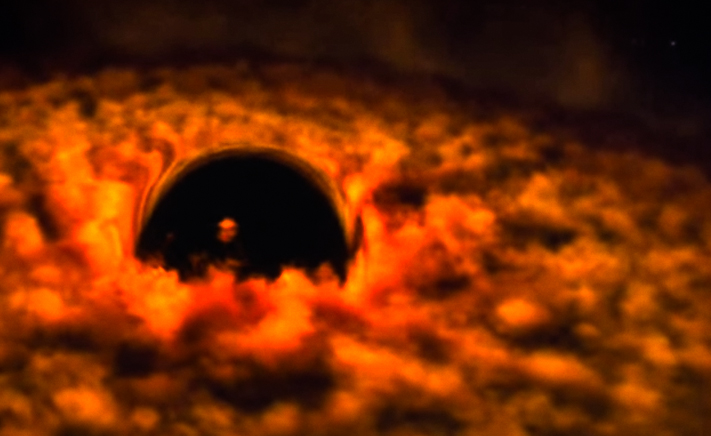Astronomers are using helium-filled hard drives to capture the first-ever image of a supermassive black hole – a feat that proved impossible with regular drives.
Mapping an image of a black hole
At the top of Sierra Negra in Mexico, a mere 15,000 feet above sea level, astronomers are working at the Large Millimeter Telescope to “take a photo” of Sagittarius A* – a supermassive black hole about 4 million times larger than our sun that sits at the center of our Milky Way.
The project, called Event Horizon Telescope (EHT), is essentially a virtual telescope the size of Earth, achieved by synching telescopes all over the world to simultaneously point at the supermassive black hole. The result is an image with 2,000 times more detail than those produced by the Hubble Telescope.
The goal of the EHT project is to produce the first image of a black hole boundary – the “event horizon” – to test Einstein’s theory of general relativity that says the force of gravity is so violent here that even light cannot escape.
A small, big problem
The first attempt to collect the data to produce this image from the top of Sierra Negra failed miserably. The scientists were using 32 traditional hard drives to collect information and 28 of them broke down because the air pressure at 15,000 feet is so low that the platters inside the drives collapsed.
Four years ago, the entire project may have needed to be rethought, restructured, or postponed all over a computer part. But there was good news…
A new technology: helium-filled hard drives
In 2012, Hitachi Global Storage Technologies (HGST) introduced the first helium-filled hard drives for personal and corporate computers.
The basic concept is this: Helium is lighter than air, which means that the spinning discs inside the hard drive that save your files can spin faster and with less resistance in a helium environment versus an air environment. This results in 23% lower energy required to power the drives and 50% more storage capacity.
And although it was unintentional, there was one more benefit of helium-filled hard drives that revealed itself: They work perfectly on mountaintops.
No helium-filled hard drives = no image
The EHT project switched over to HGST’s helium-filled hard drives, which are fully enclosed with their own helium mini-environment and were therefore not phased by the exterior air pressure. This time around, the data collection was a big success.
The information-grab phase of the EHT project was completed in March of this year with all of the data stored on the helium-filled hard drives. The scientists have since been compiling all of the data and analyzing it as they work to produce the world’s very first genuine image of a black hole.
Soon, we may get to feast our eyes on an authentic image of a supermassive black hole, which may have not been possible without helium.
Source: HGST, HGST blog, Event Horizon Telescope


